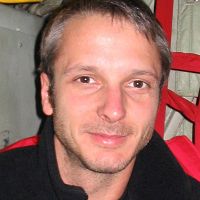Lukens et al., 2011
Tracing the Origins of Coarse Sediment in Steep Mountain Catchments.
Lukens, C.E., Riebe, C.S., Shuster, D.L., Sklar, L.S., Beyeler, J.D. (2011)
Fall meeting, American Geophysical Union, December 2011, Halls A-C, 8:00 AM. Abstract EP51A-0824.
-
Sierra, INVESTIGATOR
Abstract
Where does coarse sediment come from? How long does it persist in channels? What can the origins of sediment tell us about erosional processes and particle comminution in hillslope soils and mountain streams? To address these questions, we present new apatite-helium (AHe) ages from coarse sediment in steep streams of the Sierra Nevada, California. The evolution of grain size in sediment reflects both the physical and chemical breakdown of particles as they travel downstream. It also should reflect the dominant mechanisms of landscape evolution within a watershed. Previous studies have exploited detrital thermochronology in tracing the origins of sand-sized particles; the approach uses AHe age distributions in the sand as a geochemical fingerprint that can be compared with age-elevation relationships in bedrock as an indicator of provenance. In steep catchments, however, sand-sized particles comprise only a fraction of the sediment on the bed, and therefore tell only part of the erosional story. Much can be learned by examining age distributions of coarser grain sizes. Source elevations of coarse particles, for instance, may help reveal the relative importance of erosional mechanisms. For example, if boulders are sourced at high elevations, rock fall and debris flows likely dominate their transport. Conversely, if boulders are sourced only at lower elevations (nearer the sample location), they are more likely produced locally, and thus break down in place. We show how hypotheses such as these can be tested using detrital thermochronology on coarse sediment. We show how our analysis of detrital apatite can be coupled with a numerical model of the evolution of grain-size distributions by particle breakdown and input from slopes. We elaborate on how this approach can shed new quantitative light on processes of sediment production, transport, and breakdown in mountainous settings.
Citation
Lukens, C.E., Riebe, C.S., Shuster, D.L., Sklar, L.S., Beyeler, J.D. (2011): Tracing the Origins of Coarse Sediment in Steep Mountain Catchments. Fall meeting, American Geophysical Union, December 2011, Halls A-C, 8:00 AM. Abstract EP51A-0824..
Explore Further

